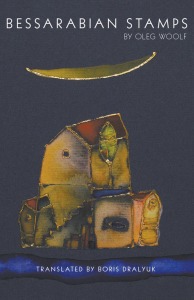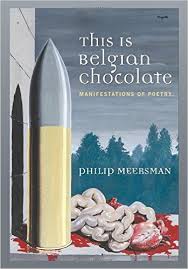
When I was coming of age as a poet in Chicago, Roger Ebert was just the chubby-faced guy whose photo sat at the top of his film review column. I couldn’t have cared less about any iteration of his dumb movie review show with . . . that other guy, the skinny one. My opinion: Ebert wrote about the work of other artists; he wasn’t one himself. To me, in my teens and 20s, that was cause for dismissal. But after watching Steve James’s documentary, “Life Itself,” based on Ebert’s 2012 autobiography of the same name, I now realize that his life was art, and that I miss(ed) Roger Ebert.
I watched the James documentary last weekend on Netflix. I truly wasn’t looking to get interested — I was looking for something to background a nap on the couch — but I got interested when I heard these words, uttered by Ebert at the beginning of the film:
“The purpose of civilization and growth is to be able to reach out and empathize a little bit with other people. And, for me, the movies are like a machine that generates empathy. It lets you understand hopes, aspirations, dreams and fears. It helps us to identify with the people who are sharing this journey with us.”
That was unexpected. And then a colleague read the beginning of his column for the Daily Illini newspaper, written in 1963 when he was 21 and co-editor of the paper, in the wake of the 16th Street Baptist Church bombing in Birmingham, Alabama. He started out his article by quoting Martin Luther King, Jr.’s words to George Wallace: “The blood of these innocent children is on your hands.” Following that, Ebert’s own words were:
“That is not entirely the truth. The blood is on so many hands that history will weep in the telling. And it is not new blood. It is old, very old. And as Lady Macbeth discovered, it will not ever wash away.”
How prescient he was. And how young he was: 21 and already a co-editor of a newspaper (albeit the student newspaper of U of I at Champaign-Urbana, where he was attending college). And that was another thing: he had wanted to go to Harvard, and there’s no doubt he would’ve gotten in, but his father told him in no uncertain terms that he was not going to Harvard — where would they get the money? Mom was a bookkeeper, dad an electrician. U of I, his hometown school, was where he was headed. (His bitchy TV buddy, the skinny one, went to Yale.) After college, after going to work at the Sun-Times reviewing movies — not a gold-standard position back in the ‘60s — he became one of those tough, hard-drinking newspaper types that just don’t exist anymore. James uses quotes from the autobio in the film, and this is what Ebert wrote about the bar wherein he drank hard, O’Rourke’s:
“It was a shabby street-corner tavern on a dicey stretch of North Avenue, a block after Chicago’s Old Town stopped being a tourist haven. In its early days it was heated by a wood-burning pot-bellied stove, and ice formed on the insides of the windows . . . When a roomer who lived upstairs died, his body was discovered when maggots started to drop through the ceiling.”
Not that it matters, but my feeling is: if you weren’t born in the actual city o’ Chicago — Ebert was born in Urbana, Illinois — and you end up drinking in a place like that, you’re okay. A colleague of Ebert’s pointed out in the film that of all the well-known, hard-drinkin’ guy-writers associated with Chicago — radio personality Studs Terkel, Simone de Beauvoir’s other boyfriend Nelson Algren, and Nobel-winning Saul Bellow — only Ebert was born anywhere near Chicago. (I’m leaving out Mike Royko because you probably need to have lived in Chicago to know who he was, and that his Polish family owned a tavern on the northwest side.) So, there Ebert was, getting shit-faced in a dive every night and writing film reviews during the day. Interesting. I never woulda thought.
Then there was a montage of his columns from the ‘60s, clipped from the paper, and among them I saw “Early Godard.” I actually got up off the couch and hit pause, to see exactly when that paper came out: October 29, 1969. He wrote about “Le Petit Soldat” — made just after “Breathless” — and “Six in Paris.” So, he knew his stuff, and his stuff could be read in the pages of the Sun-Times, the working-class person’s paper. Oh — his 1979 “Beyond the Valley of the Dolls” script credit. One of the funniest moments in the James documentary was Martin Scorcese saying, of the title: “Beyond the valley. It was beyond it!” (Get it? It was beyond!) I knew Ebert had written the script, but I guess I’d forgotten, because when it came up in the documentary I laughed out loud. Donna LaPietra, an executive producer of “Siskel & Ebert” in the 80’s, said, in the movie, “How on Earth did Roger Ebert write ‘Beyond the Valley of the Dolls’?” Well, he was offered the job by Russ Meyer himself. Apparently, Twentieth Century Fox had owned the rights to the title, and was willing give it to any director who could come up with a script. As Ebert tells it, “The movie [Meyer explained] . . . would simultaneously be a satire, a serious melodrama, a rock musical, a comedy, a violet exploitation picture, a skin flick, and a moralistic expose of the oft-times nightmarish world of show business.” Go, Roger.
Then there was his — fake, I had supposed — rivalry with the skinny guy, Gene Siskel, movie critic for the more effete Tribune. (Wait . . . how effete? Embedded in the Tribune Tower’s neo-Gothic façade are pieces of the Taj Mahal, the Parthenon, Hagia Sophia, the Great Pyramid, Notre Dame, the Great Wall of China, and Angkor Wat —to name a few.) Turns out the rivalry — the pure enmity — wasn’t fake. Here’s their banter, transcribed by me from the documentary, as they try to record a commercial for their TV show. After Siskel flubs a line, Ebert says, to someone off-camera:
“Did you know that for Gene speech is a second language?”
Gene: “Roger’s first language is, ‘Yes, I’ll have an apple pie with my order.’ He asks the McDonald’s girls if he can have apple pie with his order before they ask him!”
Roger: “And you know what Gene says when he goes into McDonalds? ‘Can I haf a athel eye wif my orther?’”
Another take ends with Siskel calling Ebert an asshole. It seems, however, that as the years went by, they came to agree on some things:
GS: “You know, they don’t get enough shit, basically, the WASPS.”
RE: “They don’t, they don’t.”
GS: “They run the goddamn country, and all of us . . . all of us . . . and I‘m speaking to anyone who’s eavesdropping right now: Come on, band together people, let’s overthrow the country!”
RE: “Protestants: people who sort of want a religion. The goddamn Catholics and the fucking Jews: we go back a few years together!”
GS: “Come on! We’re real! We’re real! We get down and dirty!”
RE: “We were banding together when Martin Luther was only a gleam in his mother’s eye!”
Then, there’s his relationship with his wife Chaz, who says in the film, “Roger weighed three hundred pounds when we first started dating. He didn’t care that he was fat. He thought he was just great. And that was so sexy!”
Chaz is black and Roger, of course, was white. “Selma” director Ava DuVernay, interviewed in the film, makes note of this in relation to her own connection with Roger:
“It’s dangerous, as a black woman, to give something that you’ve made, from your point of view . . . to a white man, whose gaze is usually the exact opposite, and say ‘You are the carrier of this film to the publc. You’re the one who’s going to dictate whether it has value.’ And I had a lot less fears around that with Roger. ‘Cause you knew here was someone who was going to take it seriously, and come with some historical context, some cultural nuance. I mean, everybody knows Roger had a black wife. You know what I mean? It’s like an honorary brother. I mean: he lived with a sister? That’s a whole different understanding of black women!”
If you want to have yourself a good, cathartic cry (like I did), look at this, from Roger’s blog in 2011. Yes, that is DuVernay, as a little girl, in the photo, also posted at the top of this entry:
http://www.rogerebert.com/balder-and-dash/a-photo-of-a-little-girl-and-memories-of-two-beloved-aunts
His relationships with two other filmmakers, Errol Morris and Ramin Bahrani are also explored in the film (Bahrani visits him shortly before his death) but the DuVernay friendship is especially touching.
Then there was his diagnosis, and the progress of his cancer. And that was where, for me, he became an artist, and where everything he did before became part of, and redefined, that art: he lived out his death in public, in front of Steve James’s camera — filming began five months before Roger’s death — and chronicled it himself, on his blog. We learn that in 2002 he was diagnosed with thyroid cancer. In 2003, he had surgery for cancer in his salivary gland. In 2006 he was diagnosed with cancer in his jaw, and had another surgery. A week after that surgery his carotid artery burst near the surgery site. In 2007 he lost his voice and began “talking” via a computerized voice system. He had surgery in early 2008 to restore his voice and reverse complications from previous surgeries, but the procedure was not successful. In the spring of 2008 he fell and fractured his hip, and in 2012 he had another surgery, to repair the hip. He went through rehab seven times. All of this, including various hospital procedures, is included in the film and is painful to watch. Through all of this, he writes on his blog, not only of his death but about his many interests. His blog is fascinating. I certainly don’t agree with everything he wrote there (and of course, I didn’t read it before this weekend), but reading it now I see a living spirit, a working class guy, a smart-ass, a too-big-for-his-britches (literally) jerk, a lover of art, a husband, a white stepfather and step-uncle to black children and adults, and supporter of up-and-coming filmmakers. Perhaps most importantly, an educator in the lessons of death. His last blog post, written — unbelievably — two days before his death is cogent and full of life:
“It really stinks that the cancer has returned and that I have spent too many days in the hospital. So on bad days I may write about the vulnerability that accompanies illness. On good days, I may wax ecstatic about a movie so good it transports me beyond illness.” (Roger Ebert’s Journal)
Pondering all this, I can’t help but wonder if, back then, I wasted my time on avant-garde poetry when I could’ve been learning some truly interesting stuff about life itself — through the prism of film — from this chubby-ass guy who was really living it.
Tags: art, bars, bartenders, cancer, Chicago, death, film, newspapers, Roger Ebert, writers



